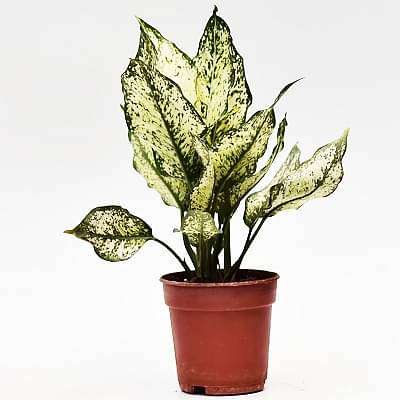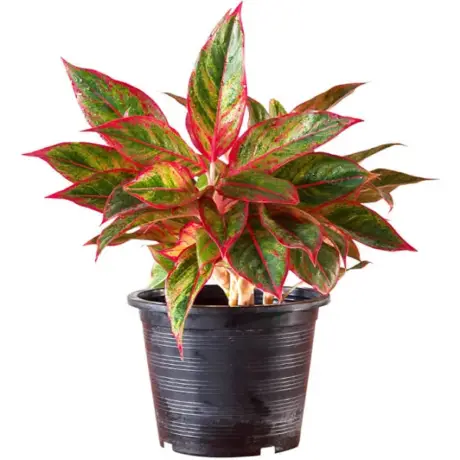Carrot (F1 Hybrid ) Seeds
Original price was: ₹40.00.₹35.00Current price is: ₹35.00.
Additional information
| Weight | 0.5gm |
|---|
Guaranteed safe checkout
Description
Description
Carrot F1 Hybrid Seeds
Carrot F1 Hybrid Seeds are specially developed to produce uniform, high-quality roots with excellent taste, color, and texture. These hybrids combine vigor, disease resistance, and adaptability, making them ideal for both home gardens and large-scale cultivation. The plants grow strong and healthy, yielding smooth, cylindrical carrots with vibrant orange color, fine texture, and rich sweetness.
F1 hybrid carrots mature faster than traditional varieties and ensure consistent size and shape, which makes them perfect for fresh market sales and kitchen use. The roots are crisp and tender, packed with essential nutrients such as beta-carotene, vitamins A and C, and minerals that promote healthy vision and overall well-being.
These hybrids perform well in a variety of soil types, especially in loose, sandy loam soil with good drainage. They are also resistant to common diseases such as leaf blight and cavity spot, ensuring a reliable harvest.
With proper care, Carrot F1 Hybrid Seeds produce abundant yields of delicious, nutrient-rich carrots that stay fresh longer and maintain their bright color and sweetness even after harvest — an ideal choice for growers seeking premium quality and productivity.
Of course! Here is a comprehensive guide to caring for your Carrot ‘F1’ seed plants, from sowing to harvest.
The “F1” designation means it’s a first-generation hybrid, bred for specific traits like uniformity, disease resistance, and vigor. The care is largely the same as for any carrot, but you can expect very consistent results.
### 1. Sowing & Planting
This is the most critical stage for carrots.
* **Timing:** Sow seeds directly outdoors 2-4 weeks before the **last expected frost** in spring. Carrots enjoy cool weather and can tolerate a light frost. For a continuous harvest, sow successive batches every 2-3 weeks. You can also plant in late summer for a fall harvest.
* **Soil:** **The Key to Success!**
* **Texture:** Must be **light, loose, and well-draining**. Remove stones, clumps, and debris. Heavy or rocky soil causes stunted, forked, or misshapen roots.
* **Preparation:** Dig down to a depth of at least 12 inches (30 cm). Mix in generous amounts of compost or well-rotted manure to improve texture and fertility. **Avoid fresh manure** as it is too high in nitrogen and will cause hairy, forked roots.
* **pH:** Slightly acidic to neutral (6.0 to 7.0) is ideal.
* **How to Sow:**
* Plant seeds **¼ to ½ inch (0.5 – 1 cm) deep**.
* Sow 2-3 seeds per inch in rows.
* Space rows about 12-18 inches (30-45 cm) apart to allow for weeding and growth.
* Carrot seeds are tiny. Mixing them with dry sand can help you distribute them more evenly.
* **Water gently** after sowing and keep the soil consistently moist until germination.
### 2. Germination & Thinning
* **Germination Time:** Carrots are slow to sprout, typically taking **14-21 days**.
* **Thinning (Crucial!):** Once seedlings are 1-2 inches tall, you must thin them.
* **First Thinning:** Thin to about 1 inch apart.
* **Final Thinning:** A few weeks later, thin again to the final spacing recommended on your **specific F1 seed packet**. This is usually **2 to 4 inches (5-10 cm) apart**.
* **Why Thin?** Crowding results in small, twisted carrots. Thinning gives each root the space it needs to grow straight and thick.
* **Tip:** Snip the tops of unwanted seedlings with scissors instead of pulling them. This avoids disturbing the roots of the carrots you want to keep.
### 3. Watering & Feeding
* **Watering:**
* **Consistency is key.** Carrots need **even, consistent moisture**.
* Aim for about **1 inch of water per week**. Avoid letting the soil dry out completely, then flood it, as this can cause the roots to crack or split.
* Water deeply to encourage deep root growth.
* **Fertilizing:**
* If you prepared the soil with compost, heavy feeding is often not necessary.
* If needed, use a **low-nitrogen, higher-phosphorus fertilizer**. Too much nitrogen encourages top growth (the foliage) at the expense of the root.
* A light side-dressing of compost or a balanced organic fertilizer when tops are 4-5 inches tall is usually sufficient.
### 4. Weeding & Mulching
* **Weeding:** Weed carefully, especially when carrots are young. They are poor competitors. Hand-pull weeds close to the seedlings to avoid damaging the delicate carrot roots.
* **Mulching:** Once the plants are established (about 4-5 inches tall), apply a light mulch of straw, shredded leaves, or grass clippings. Mulch helps:
* Retain soil moisture.
* Suppress weeds.
* Keep the soil cool.
* Prevent the “shoulders” of the carrots from turning green and bitter from sun exposure.
### 5. Pest & Disease Management
* **Carrot Rust Fly:** The most common pest. The fly lays eggs near the carrots, and the larvae burrow into the roots.
* **Prevention:** Use floating row covers to block the fly from reaching the plants. Practice crop rotation (don’t plant carrots in the same spot each year).
* **Aphids:** Can cluster on the foliage. Spray them off with a strong stream of water or use insecticidal soap.
* **Diseases:** Issues like leaf blight can affect the tops. Ensure good air circulation by proper thinning and avoid overhead watering to keep foliage dry.
### 6. Harvesting
* **Timing:** Most F1 varieties are ready 60-80 days after sowing, but check your seed packet.
* **How to Tell:** The top of the carrot root (“shoulder”) will be about ¾ to 1 inch in diameter and often pop up slightly out of the soil. This is the best indicator.
* **How to Harvest:** Water the soil lightly first to make pulling easier. Loosen the soil around the carrot with a garden fork if necessary, then gently grasp the top and pull straight up.
### 7. Storing
* **Short-term:** Twist off the tops (greens) about an inch above the root. The greens draw moisture and flavor from the carrot. Store in the refrigerator in a plastic bag for several weeks.
* **Long-term:** Carrots can be stored in a cool, humid place for months. A common method is to pack them in damp sand or sawdust in a container, like a cooler or a box in a root cellar.
—
### Quick Care Cheat Sheet
| Aspect | Key Instructions |
| :— | :— |
| **Soil** | **Loose, stone-free, and deep.** The most important factor. |
| **Sowing** | **Direct sow** in cool weather. Do not transplant. |
| **Spacing** | **Thin ruthlessly** to 2-4 inches apart for good-sized roots. |
| **Watering** | **Consistent and even.** Don’t let soil dry out completely. |
| **Feeding** | **Low nitrogen.** Too much nitrogen causes forked, hairy roots. |
| **Pest Control** | **Row covers** are the best defense against carrot rust fly. |
| **Harvest** | Check the “shoulder” size at the soil surface. |
By following these steps, your F1 hybrid carrot seeds should produce a bountiful and beautiful harvest of uniform, crisp, and sweet carrots. Happy gardening
Specifications
- Lorem ipsum dolor sit amet
- Praesent vitae justo id velit
- Duis sed nisi rhoncus, fringilla turpis




Reviews
There are no reviews yet.